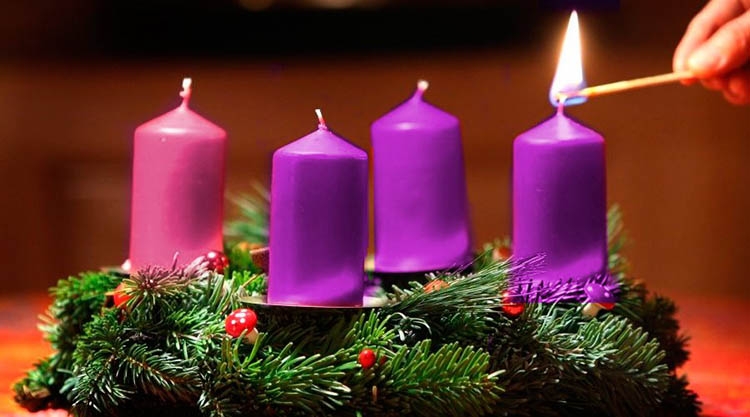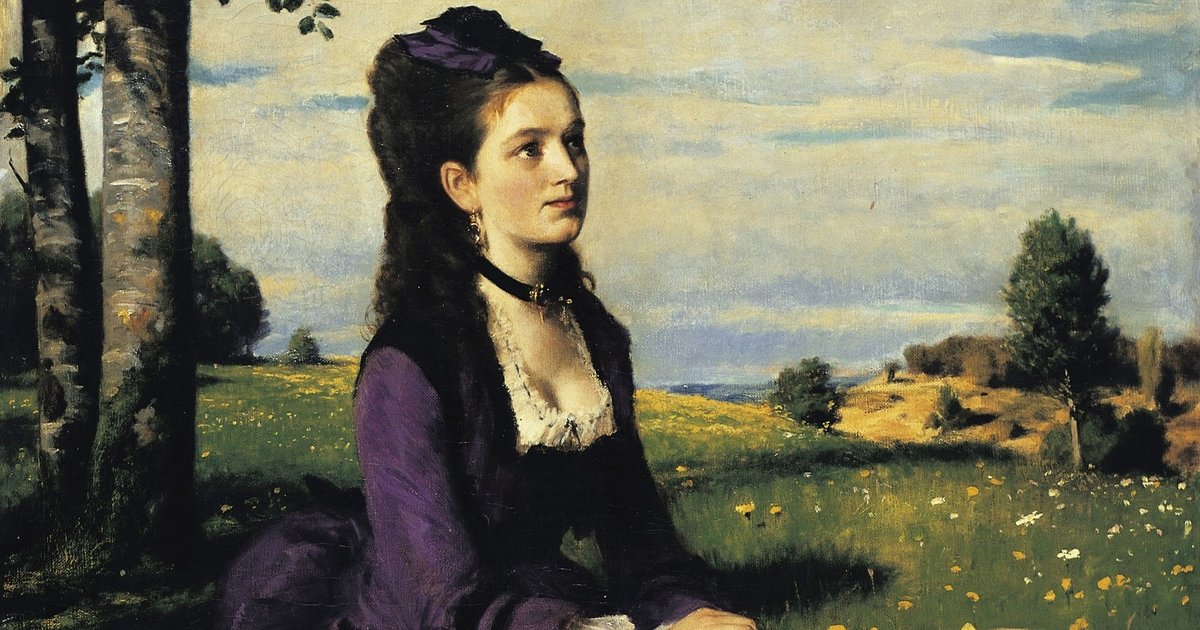Purple, Violet, Pink and Purple – Part 1 of the Advent series.
Store shelves are already filled with Christmas sweets and decorations. My feelings on this are the opposite, on the one hand, the Christmas winds, whether intertwined with any commercial interest, undoubtedly have something inexplicably warm. On the other hand, there are plenty of families where the holiday is nothing more than buying these many products.
As I walk the store shelves, I still have a plaque in my head. A well-known and mysterious painting.
The image of a woman in a purple dress floats before my eyes: a painting whose reproductions have seduced the culture in the living rooms of many Hungarian families two generations ago.
Do not know what the picture means. I don’t know what the painter was thinking during creation. All I know is that a woman’s dress is purple – just like the first candle in a Christmas wreath.
The dream of every artist to gain such popularity for once that what he creates is that it is no longer the creator’s intention, not his own life and the subtlety of work, that is the subject, but the work itself.
The image of a woman in a lilac dress is such a creation. The picture sparkles before our eyes, even if we are not a fan of art, because it is a masterpiece. A picture in which everyone can explain its message has its own solution in which lies some general truth.
My eyes see repentance in this work. There is repentance in the picture or in the woman or in the painter. Purple indicates to me, the posture of the woman or the intent of the painter, who may have painted the picture out of remorse. It doesn’t matter if this is true, the guess has already been born.
And repentance, which can arise from the deep layers, has great room in Advent.
Looking at store shelves at Christmas is surrounded by a variety of repentance. There are a lot, I don’t even know which product to choose, what to come up with – I know that it is not necessary to buy, without it the holiday will pass, but still Should. I have to buy it, I have to put it together, I need a gift for him and him. There will be so much rubbish, where does so much wrapping paper and so much unsold chocolate end up? Ah, anyway, it’s not my fault that they produce so much, after all, I don’t throw trash into the ocean.
These doubts are very common indeed. It just flashes in my mind for a moment, letting them go. Do not torture me guilt solution beyond me. My conscience is not so strong that I don’t give it to my family to get rid of the garbage. Then I remember I was living in a very good place in the world, and I don’t have to be without him, I don’t have to be skilled at getting food at the table. Well, I can’t be guilty of something I can’t really do then.
I let go of the anxiety of general wasting, but then I was struck by the realization of something bigger, something more collectively dangerous—something truly frustrating and contradictory.
On a quiet night from Bethlehem, the mob shouted, “And one mob is me.

Guilt has a place in our hearts in preparation for Christmas, we cannot erase it and deny it because it will not go away yet.
Guilt gives way to a blessing that we don’t have to work for—it can only be appreciated. How can a sinless priest assess grace?
As I arrive at the store’s checkout shop, my thoughts subside, daydreaming with buttercups in my basket: Does the woman in the purple dress agree with me?
Either way, I light the first purple candle of Advent with guilt in the corner of my heart today.
Bardus Platt Buttercup
The author is a sixth-year apprentice pastor at the First Church’s Care Center in Baranya.












































